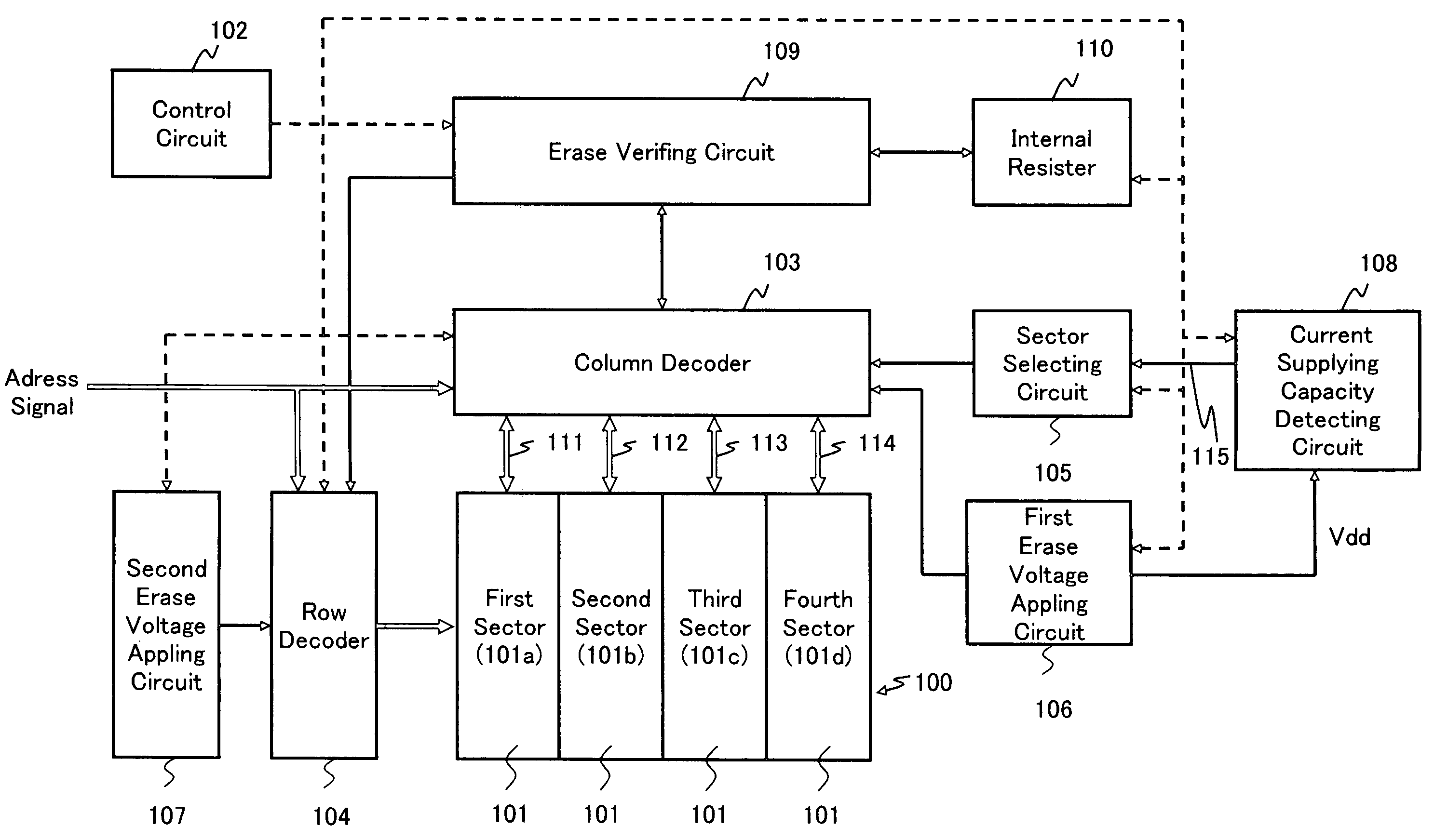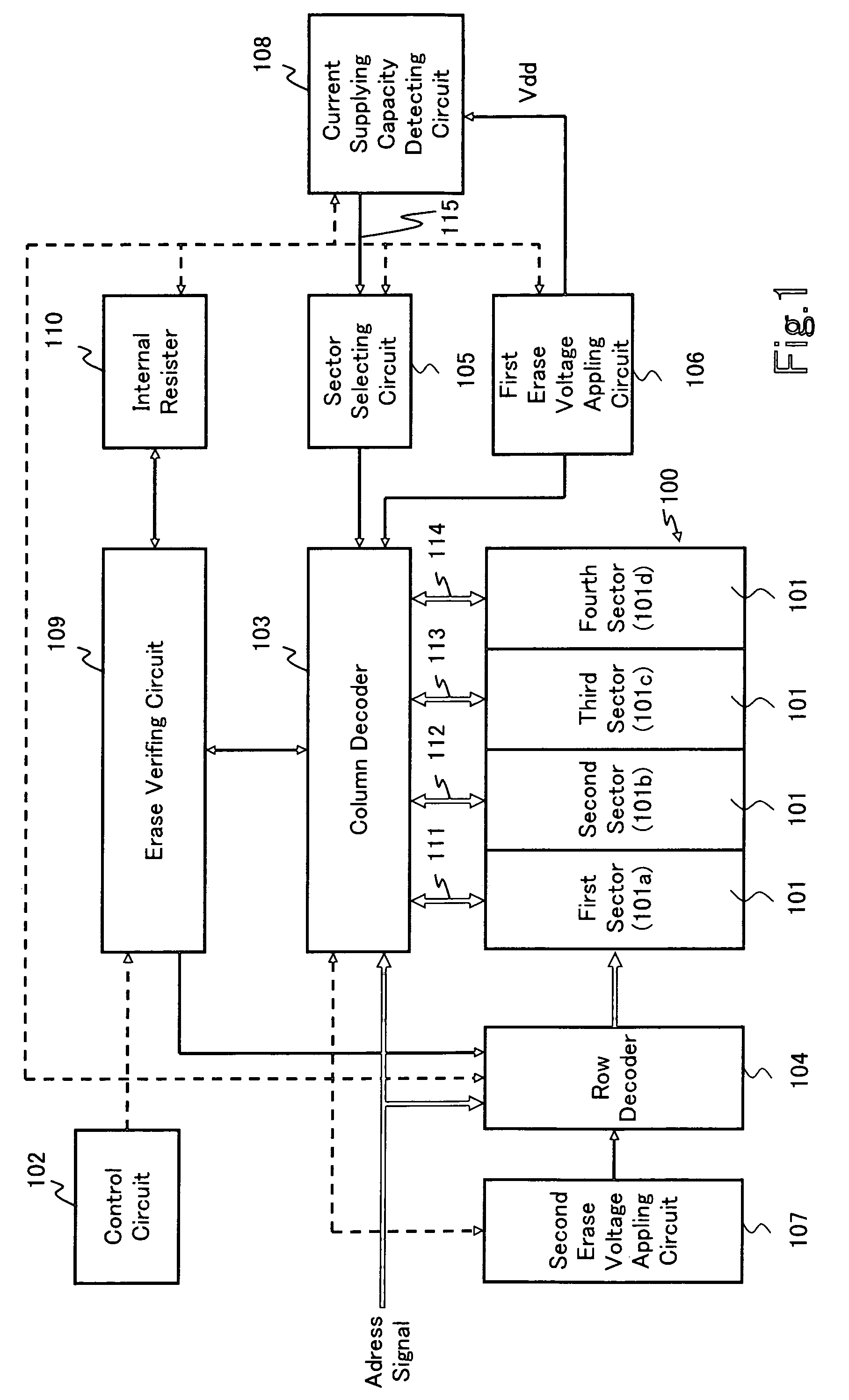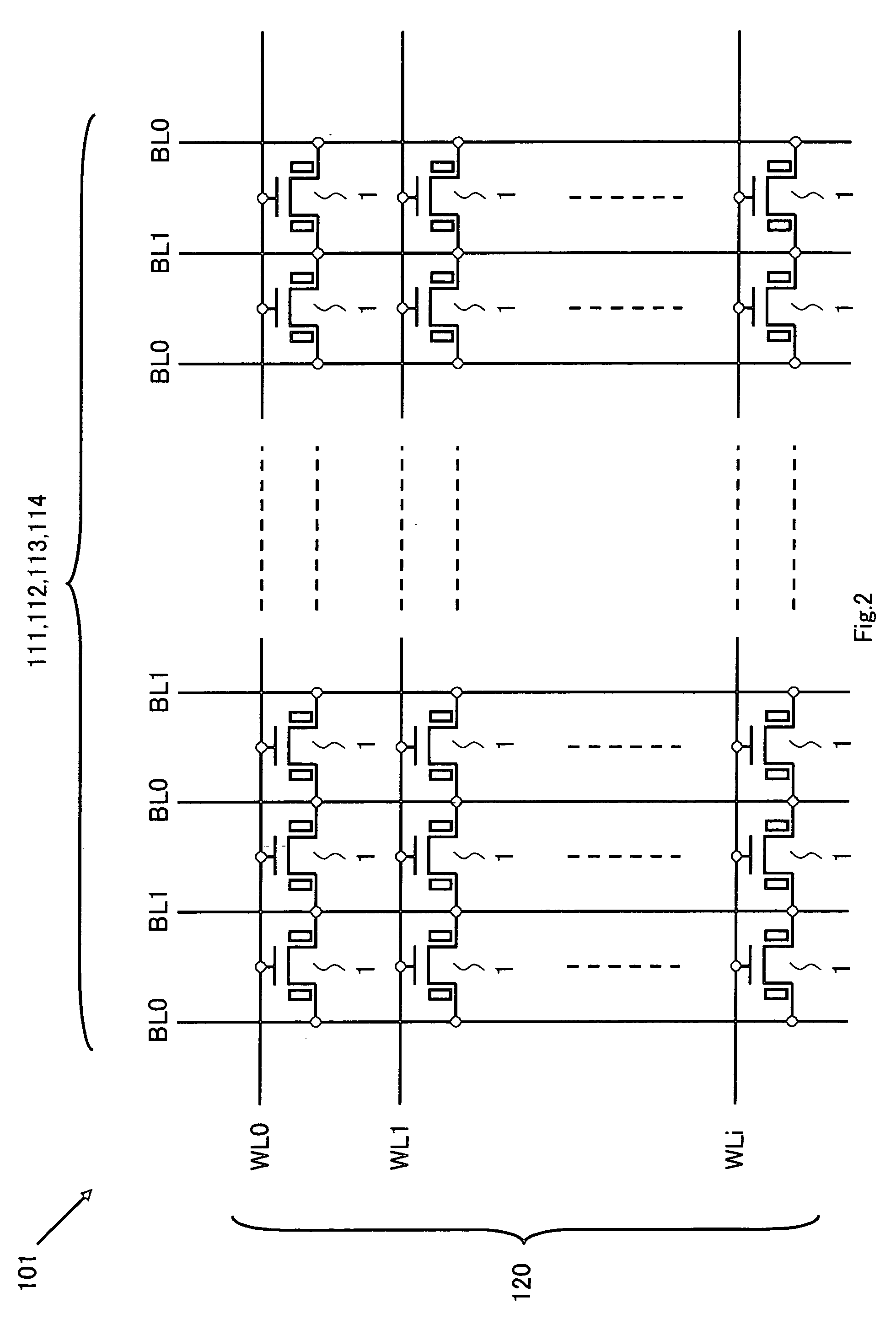Nonvolatile semiconductor memory device
a semiconductor memory and non-volatile technology, applied in semiconductor devices, digital storage, instruments, etc., can solve the problems of reducing the reliability of data to be output, unfavorable conventional flash memory, and unfavorable block-by-block basis in view of energy saving, so as to minimize the effect of time consumption on the erasing action
- Summary
- Abstract
- Description
- Claims
- Application Information
AI Technical Summary
Benefits of technology
Problems solved by technology
Method used
Image
Examples
Embodiment Construction
[0041] One embodiment of the present invention will be described in the form of a nonvolatile semiconductor memory device (referred to as an inventive device hereinafter), referring to relevant drawings.
[0042]FIG. 1 is a schematic block diagram of the inventive device. Shown in FIG. 1 is a circuit block of the inventive device for conducting an erasing action. The inventive device comprises a group of memory cell arrays 100, each array consisting mainly of sidewall type memory cells (referred to as memory cells hereinafter) arrayed in a matrix form having rows and columns. FIG. 1 illustrates one memory cell array 100 for simplification. The memory cell array 100 is divided into a plurality of sectors 101. Four of the sectors 101 separated uniformly along a column are shown in FIG. 1 while the sectors in each memory cell array 101 are not limited to the number and the direction of division in the embodiment. As the memory cell array 100 in the inventive device is selected with an er...
PUM
 Login to View More
Login to View More Abstract
Description
Claims
Application Information
 Login to View More
Login to View More - R&D
- Intellectual Property
- Life Sciences
- Materials
- Tech Scout
- Unparalleled Data Quality
- Higher Quality Content
- 60% Fewer Hallucinations
Browse by: Latest US Patents, China's latest patents, Technical Efficacy Thesaurus, Application Domain, Technology Topic, Popular Technical Reports.
© 2025 PatSnap. All rights reserved.Legal|Privacy policy|Modern Slavery Act Transparency Statement|Sitemap|About US| Contact US: help@patsnap.com



